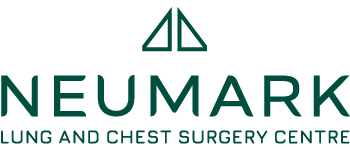Nondisplaced rib fractures, often referred to as ‘hairline’ fractures, are a common yet underreported injury that can leave patients in excruciating pain and discomfort. These fractures, where the bone remains in place but is cracked, can be just as debilitating as their more severe, displaced counterparts. Despite their prevalence, nondisplaced rib fractures have long been overlooked, with many patients forced to endure prolonged periods of suffering without adequate treatment.
A Hidden Epidemic of Nondisplaced Rib Fractures
Nondisplaced rib fractures are a silent epidemic, with the most common causes of rib fractures include direct impacts such as those from falls or car accidents. Less severe impacts can also cause fractures, especially in older adults with osteoporosis. They can occur due to various traumas, including falls, sports injuries, and even minor accidents. The symptoms are often subtle, making diagnosis challenging, and the lack of visible signs of injury can lead to delayed or missed diagnoses.
Rib fracture nonunion that hasn’t healed properly can lead to ongoing pain after a chest injury. This oversight can have devastating consequences, as untreated nondisplaced rib fractures can lead to chronic pain, respiratory complications and even long-term disability. The exact number of people affected by this problem is not known. Research aimed to determine how often rib fractures fail to heal properly after being treated without surgery. It also examined whether the number of fractures or specific details about the fractures, like their location and type, affect the likelihood of nonunion (failure to heal).
Recovery Time for Nondisplaced Rib Fractures
Recovery time for nondisplaced rib fractures typically ranges from 3-6 weeks. Here are some specific guidelines:
- Short-term Recovery: After hospital discharge, take it easy for a few weeks to understand your pain-free limitations
- Physical Therapy and Rehabilitation: Start gentle range-of-motion exercises as soon as possible and gradually increase general exercise over 8-12 weeks
- Return to Contact Sports: Avoid contact sports for at least 6 weeks to ensure proper healing
- Full Recovery: Full recovery can take up to 3 months, during which strenuous activities should be avoided. Follow a structured rehabilitation program for proper healing and to prevent complications
Recovery times can vary based on injury severity, complications, age, and overall health.
Susceptibility to Future Fractures
Nondisplaced rib fractures can make your ribs more susceptible to future fractures.
Studies have shown that the presence of nondisplaced rib fractures can increase the risk of subsequent fractures, particularly if the initial fracture is not properly treated or managed. For example, a study published in the Journal of Thoracic and Cardiovascular Surgery found that the number of displaced rib fractures was a significant predictor of pulmonary complications and that three or more rib fractures or any displaced rib fracture increased the risk of complications.
Additionally, nondisplaced rib fractures can lead to chronic pain and discomfort, which can affect respiratory function and increase the likelihood of further injury. The weakened rib structure can also make it more susceptible to fractures from minor traumas or even normal activities.
Evolution of Treatment for Nondisplaced Rib Fractures
Stable, nondisplaced rib fractures, where the bone is cracked but not out of place, can usually be treated without surgery and generally heal without problems. This is widely agreed upon. Traditionally, these fractures have been managed conservatively, with patients advised to rest, take pain medication, and wait for the fracture to heal on its own.
“However, this conservative approach can sometimes be ineffective, leaving patients to endure weeks or even months of discomfort and an increased prevalence of future rib fractures”, states Dr Harish Mithiran, director of Neumark Lung & Chest Surgery Centre.
Recent studies have shown that internal fixation, a surgical technique where the fracture is stabilised with metal plates and screws, can significantly improve outcomes for patients with more severe chest injuries like “flail chest”, where part of the rib cage is detached and moves independently.
Incidentally, a study observed that patients with severe nondisplaced rib fractures who were initially not considered candidates for rib fixation developed interval displacement. “This displacement potentially led to instability of the chest wall, making breathing difficult and increasing the risk of complications.”
Role of Thoracic Surgery in Rib Fractures
Recent advances in thoracic surgery have significantly improved the treatment of rib fractures, particularly for more severe cases. Minimally invasive techniques such as video-assisted thoracoscopic surgery (VATS) for surgical stabilisation of rib fractures have shown to be effective in managing complex fractures like “flail chest” and other severe rib injuries.
For stable, nondisplaced rib fractures, conservative management remains the standard approach, involving rest, pain management, and allowing natural healing. Surgical intervention for nondisplaced rib fractures is typically not necessary unless complications arise.

